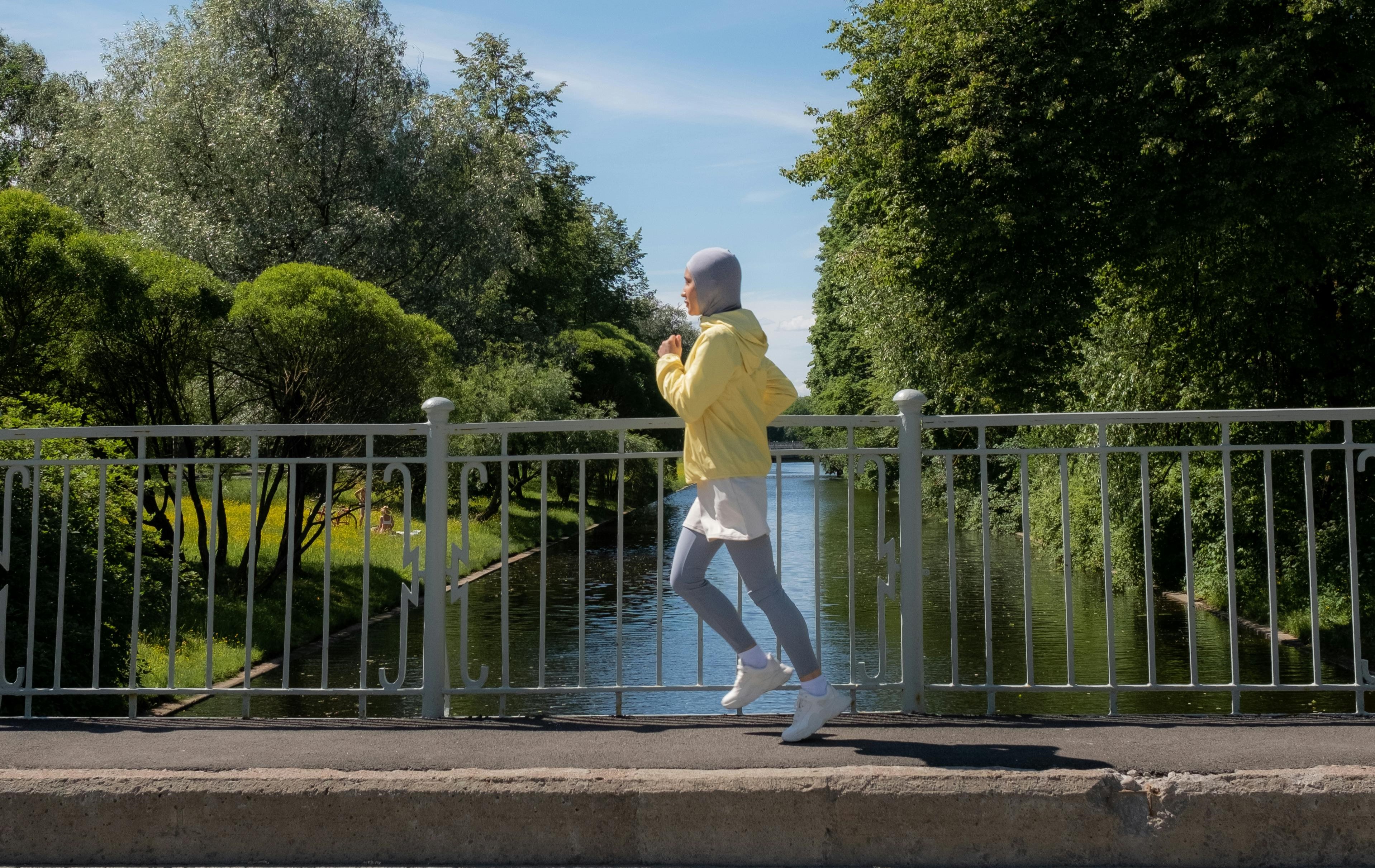Increasing physical activity amongst Muslim women
Importance of physical exercise
We often hear about the importance of exercise and staying physically active through advertisements on TV and social media and from health professionals like GPs. The World Health Organisation recommends adults complete approximately 75 minutes of intense exercise, or 150 minutes of moderate exercise, each week – that could be while you’re walking to or from work, picking children up for from school, or any activity that keeps you moving in general. By staying active and avoiding sedentary lifestyles, we reduce the risk of developing noncommunicable diseases (NCDs) such as type 2 diabetes, cardiovascular disease, most cancers, and respiratory disease. Conversely, physical inactivity is linked to an increased risk of NCDs and is responsible for up to 8% of NCDs across the world.
Yet despite the benefits, physical activity levels have not improved since 2001 and more than 25% of adults globally are not meeting the minimum requirements for sufficient physical activity. This could be due to many factors such as increased sedentary lifestyles both at work and at home, and an increase in sedentary methods of transport like traveling in cars and trains. Moreover, levels of physical inactivity are higher in lower-income countries compared to higher-income countries. In terms of ethnic group, people from Asian, Black or Other ethnic groups in England are more likely to be physically inactive than those from a White ethnicity. Additionally, women and girls are more likely not to reach the level of physical activity recommended by the WHO. In the UK, women were found to be 36% more likely to be physically inactive than men – 11.8 million women are classified as physically inactive, compared to 8.3 million men. It is difficult to find an exact reason for why this is, but it could be linked to women having less social support, lower self-esteem and less motivation to be regularly physically active.
Physical inactivity amongst Muslim women
Statistically, Muslim women in England are more likely to be physically inactive compared to other groups of women from different religions (including those with no religion). Only 50.7% of Muslim women in the UK are active, approximately 10% less than women in other demographics. One study has found that Arab females are the least physically active out of all subpopulations. A study by Muslimah Sports Association found that whilst 97% of British Muslim women would like to increase their level of sports and physical activity, 37% are not involved in any form of activity. This places Muslim women at increased risk of developing NCDs and conditions associated with a lack of physical activity. Muslim women have also been found to be at greater risk of developing diabetes, an NCDs linked – among other risk factors – to physical inactivity.
Why do Muslim women face lower levels of physical activity?
In Muslim communities, women are more likely to observe modest lifestyles. This can include wearing loose-fitting clothing or avoiding spaces in which men also exercise, which can limit their ability to access exercise spaces. This is in addition to other reported obstacles experienced more universally amongst women, such as fear of judgement, lack of self-confidence or not having enough time. As well as this, Muslims come from diverse ethnic backgrounds, so the observance of modesty can be influenced by cultural practices and attire. Cultural factors may also lead to women spending more time at home engaged in domestic work and childcare, which decreases opportunities to dedicate time towards physical activity outside the home. A study conducted on Muslim schoolgirls in England found that Islamophobia and negative perceptions of Muslim veils such as hijabs and niqabs were contributing factors that deterred them from sports. Examples of this are sport governing bodies banning women from wearing hijab and school sport’s lessons being unaccommodating to the modesty requirements of Muslim women. This also leads to a lack of Muslim role models engaged in exercise for Muslim women to be inspired by. Therefore, Muslim women in the UK experience a range of different obstacles (both physical barriers and cultural barriers) that prevent them from being as physically active as recommended.
Potential solutions
Improved representation
Seeing women who are visibly Muslim in sports competitions or in social media campaigns is an effective way of normalising physical activity amongst Muslim female communities. Muslim women such as Ibtihaj Muhammad, Sarah Ahmed or Wojdan Shaherkani are inspiring examples of women representing their countries in sports while wearing the hijab, helping to destigmatise the view of Muslim women exercising. Furthermore, clothing lines have recently begun to offer burkinis for women (such as Nike’s 2019 Victory Swim collection) who want to dress modestly while swimming. Overall, offering more inclusive, modest clothing options for women can allow them to maintain their modesty and feel comfortable while swimming, and in other physical activities or sports. As well as this, making the option available to dress modestly normalises this option to all women, so women who choose to dress in this way feel less hyper visible.
Improving access to facilities
There are many ongoing efforts to increase access to physical exercise spaces for Muslim women. For example, Sport England have funded the Muslim Women’s Sports Foundation’s implementation of a community-based project to increase the participation and positive perception of sport amongst Muslim women. This includes training and upskilling exercise providers in the local area to be able to adapt the services they provide to better suit Muslim women. As well as this, Muslim Women in Sport collaborated with local facilities to organise women-only time slots at sports facilities such as gyms and swimming pools. They also implemented a social media marketing campaign to ensure Muslim women in the local area were aware of the project. Alongside measures such as these, a report by Muslim Women in Sport recommended that further open discussions with Muslim female communities should occur to address unconscious biases that may exist against Muslim women participating in sport and to find out further what factors would form “comfortable environments” for Muslim women.
Working with local Muslim communities
Engaging with individuals in the Muslim female community can provide further insight into what factors would make it easier for them to access spaces for physical exercise. Through this approach, some communities have invested in separate changing rooms and showers and ensuring there are female coaches and lifeguards available at sports facilities. Ensuring that there are women-only spaces can potentially remove the requirement for Muslim women to dress modestly and wear loose clothing that can impede their access to certain sports equipment or exercises. Other measures that have been recommended included covering windows and viewing panels to ensure the space is private. Some Muslim female communities found that swimming pools only had women-only hours during times while they were at work, or that women-only sections at gyms had limited equipment – these factors can be easily addressed through engaging with local communities and implementing these changes accordingly into local facilities.
Religious views on exercise
The Muslim Sport Foundation, funded by Sport England, highlighted the importance of approaching physical activity through a religious perspective. The Active Sunnah campaign, held talks at local mosques and religious centres about the importance for both women and men of keeping healthy and staying active in Islam. Other communities have begun to make the most of online fitness classes for Muslim women, which helps remove some of the barriers Muslim women can face when exercising outside or in public gyms. Lots of Muslims in the UK emphasise keeping physically active as part of their religion, especially through swimming and horse-riding, as well as staying active through praying 5 times a day (which is proven to improve blood circulation). Mosques can also provide ideal spaces for Muslim women to exercise in – a study amongst South Asian Muslim women showed that mosque-based physical activities were very effective in improving health status and physical activity levels. A study in 2017 showed that only 28% of mosques in the UK offered space to women, with substantially less offering adequate conditions and access – improving access to mosques for women, could be a great way to increase their access to suitable spaces for exercise and physical activity.
By continuing these projects and implementing community-based, local-level changes within sports facilities, schools and religious communities, this can help to remove the obstacles faced by Muslim women in their efforts to reach the recommended levels of physical activity.

